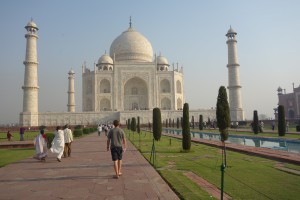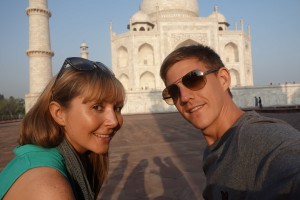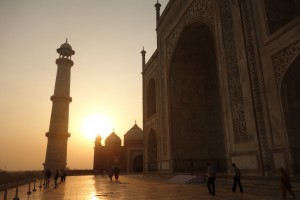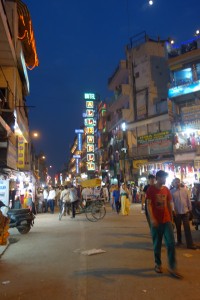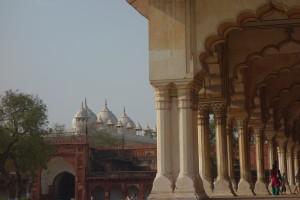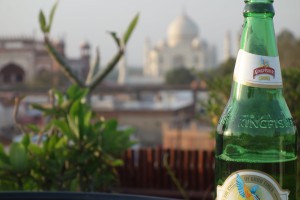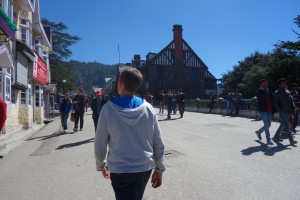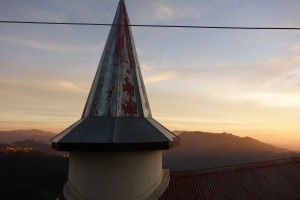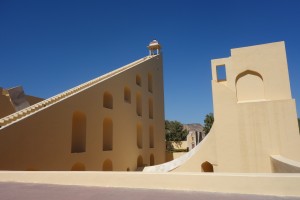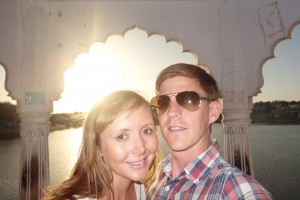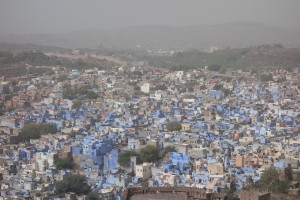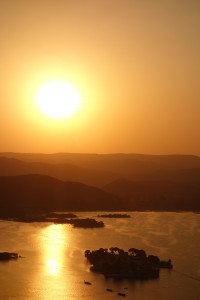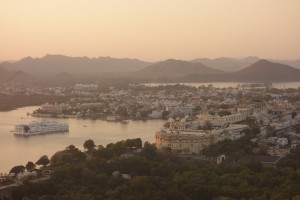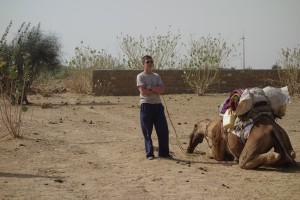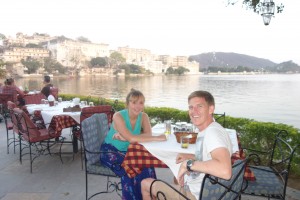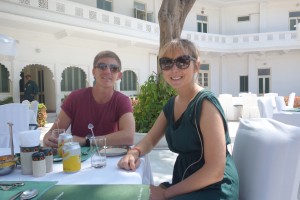“A teardrop on the cheek of eternity” is how Rabindranath Tagore described the Taj Mahal. And with prose like that it can’t fail to impress. We took a refreshingly uneventful overnight train from Udaipur to Agra, to see what is widely accepted to be the most beautiful building in the world. It doesn’t disappoint.
Words won’t convey the sense of peaceful perfection and solemn serenity, the wonderful symmetry or the subtle shifts in colour throughout the day; it seems almost alive, and there definitely seems a mournful sadness about it – you can see where the tear-drop analogies come from. There’s nothing like a tragedy to add some pathos either: In 1631 emperor Shah Jahan’s heart was shattered when his third wife, Mumtaz Mahal, died during childbirth. Clearly he loved her more than his first two wives and, through gritted teeth and a river of tears (one imagines), he announced that he would build her the best darn tomb to ever grace the surface of the planet. Construction began a year later and took 22 years and once he finished old Shah must’ve sighed aloud and known that he’d done his Mumtaz proud. He would’ve, I’m sure, loved nothing more than to live out the rest of his days safe in this knowledge but this was not to be. His bloody ungrateful son Aurangzeb usurped him and imprisoned him in Agra fort from where he could only gaze upon his masterpiece from afar. When he died they finally buried him next to his beloved Mumtaz beneath the Taj Mahal.
“A blemish on the arse cheek of eternity” is how I’d describe Agra, the city surrounding the Taj. Actually it’s not that bad, not as bad as people would have you believe – it’s just the same as most other North Indian cities – but perhaps, juxtaposed against the Taj, anything would look abject. We spent an afternoon in the fort, awoke the next morning at dawn to see sunrise at the Taj Mahal, and then left the following day. The best thing about Agra are the rooftop restaurants where you can stare like a lovesick teenager at the Taj, like a resplendent, reclining octopus with dozens of large birds of prey circling it’s onion cupola. Further entertainment is provided by gangs of street monkeys running amok on the rooftops of Taj Ganj.
From Agra it is just a quick 4-hour standing-next-to-the-toilet train journey to Delhi where we had to fight to alight. I fell under the train but luckily it remained stationary. We tried not to let that colour our opinion of the place but still came to the conclusion that it is a little underwhelming. We stayed in Pahar Ganj, a neon-lit backpacker enclave where the clamour for custom reaches its zenith, and did enjoy riding the spotlessly clean subway (although it inevitably leads to more fights to alight!) It’s not that we particularly disliked Delhi, it’s just, well, Mumbai it ain’t.
Anyway, we’ve had enough of cities and forts and buildings for now so we decided to head to paradise – the Andaman Islands.

